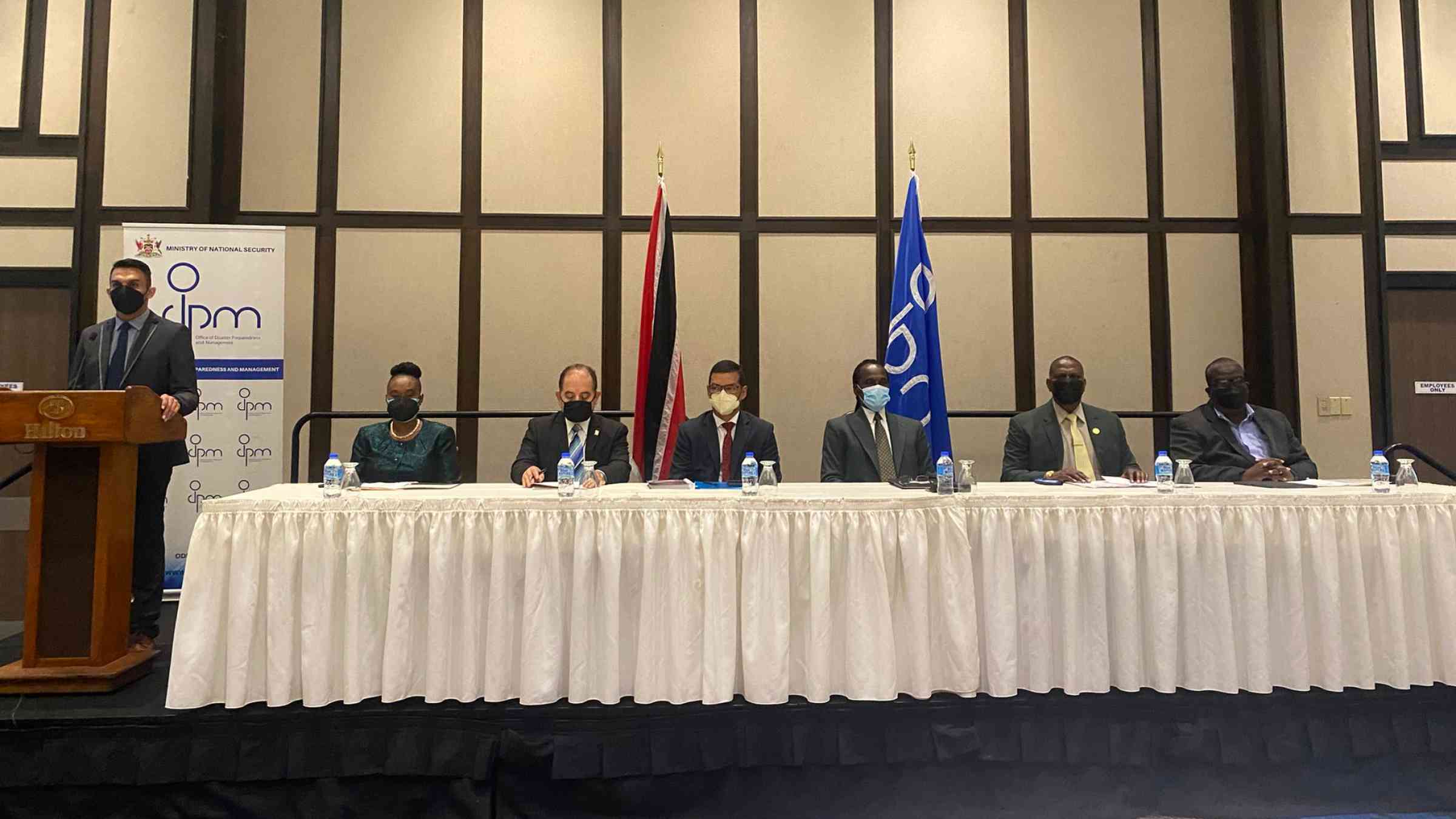Trinidad and Tobago gears up to increase resilience to disasters

Hit hard by the pandemic, Trinidad and Tobago is incorporating a strong focus on disaster risk reduction (DRR) into its recovery to better insulate it from complex shocks that risk derailing its sustainable development targets.
Using the structures incorporated in the Sendai Framework for Disaster Risk Reduction (2015-2030), the Caribbean country is taking a comprehensive overview of hazards, risks and uncertainties to inform its decision-making and planning.
"Trinidad and Tobago is a regional example for DRR,” said Raul Salazar, head of UNDRR - Regional Office for the Americas and the Caribbean. “Not only is there a strong commitment to early warning systems for multiple hazards, but comprehensive DRR policies have been implemented in all sectors of the country with the Sendai Framework as a guide."
The twin-island nation suffered a high number of COVID-19 cases during the pandemic that devastated its tourism industry, sparked heavy job losses and took a substantial economic toll.
While Trinidad and Tobago often avoids the hurricanes that frequently cause chaos across the Caribbean, it is vulnerable to other hazards including earthquakes and floods.
The United States Agency for International Development (USAID) estimates that Caribbean countries incurred an estimated $27 billion in losses and damages from natural hazards between 2000 and 2017. It calculates that disasters cost as much as 5.7 percent of GDP each year.
Trinidad and Tobago is currently drafting a Country Work Programme (CWP) which aims to comply with Target E of the Sendai Framework for Disaster Risk Reduction (2915-2030) in order to “substantially increase the number of countries with national and local disaster risk reduction strategies”, a milestone that contributes directly to the Sustainable Development Goals (SDGs).
Additionally, it is pushing risk-informed sustainable development through the Making Cities Resilient 2030 (MCR2030) initiative that aims to improve local resilience through effective policies.
MCR2030 is working with the Tobago House of Assembly (THA) and the Tobago Emergency Management Agency (TEMA) to develop a local strategy for DRR and resilience.
Thanks to MCR2030’s technical assistance, Trinidad and Tobago will begin using UNDRR’s Disaster Resilience Scorecard for Cities and be the first country in the world to pilot the Scorecard’s Disaster Displacements Addendum, which aims to assist local governments in assessing the extent to which their policies and practices effectively prevent and address disaster displacement, and informs the local resilience action plan.
DRR investment is also increasing through the Private Sector Alliance for Disaster Resilient Societies (ARISE), a network committed to supporting and implementing the Sendai Framework, through the American Chamber of Commerce of Trinidad and Tobago (AMCHAM T&T), engaging the private sector to create more risk-resilient enterprises so that business can become resilient, recover faster from disasters and help reducing risks.
Additionally, cooperation is rising among the various government departments that play a role in DRR. The country will soon join the Caribbean Safe School Initiative, part of the Worldwide-Initiative on Safe Schools (WISS) which promotes the partnership for advancing safe school implementation.
"Trinidad and Tobago understands the importance of DRR to ensure sustainable development in line with the SDGs, because nothing affects development more than disasters,” said UNDRR’s Salazar.
The UN Resident Coordinator a.i. for Trinidad and Tobago, Dennis Zulu, said UNDRR’s support for the country’s DRR initiatives is yet another example of the vibrant partnership between the United Nations and Trinidad and Tobago.
“The recovery from Covid-19 is still in a critical stage, and the United Nations is working with our partners in Trinidad and Tobago to ensure all areas of vulnerability – whether it be social, economic or environmental, are assessed and addressed. As a Small Island Developing State, disasters and hazards can have disproportionately high impacts on countries like Trinidad and Tobago, so the UN is committed to supporting prevention and mitigation responses to give T&T the best chance possible to overcome sudden shocks to the system.
Trinidad and Tobago is benefiting from the CREWS initiative (Climate Risk and Early Warning Systems) that increases life-saving preparedness and anticipatory action based on impact-based forecasting. In this sense, CREWS backed the development of the Caribbean Regional Workshop ‘Measuring Effectiveness of Early Warning Systems through Sendai Framework Target (g) and Custom Indicator’, which will help countries understand why they need a multi-hazard approach and how to improve how they assess and monitor the effectiveness of their EWS.
“Ensuring risk-informed decisions requires countries to continuously improve and update their understanding of complex threats, so that authorities, individuals and businesses can take appropriate anticipatory action,” said Salazar.
This year, the International Day for Disaster Risk Reduction will focus on Target G of the Sendai Framework for Disaster Risk Reduction (2015-2030) : “Substantially increase the availability of and access to multi‑hazard early warning systems and disaster risk information and assessments to the people by 2030”.
In his message to mark World Meteorological Day in March, UN Secretary-General António Guterres called on countries to "recognize the value of early warnings and early action as critical tools to reduce disaster risk and support climate adaptation". In addition, better addressing how to assess and monitor regional hazards, from hurricanes to volcanic eruptions and earthquakes, brings Caribbean countries in line with Target G.
By taking a comprehensive approach and integrating DRR into planning and investment decisions, the country has directly contributed to the strengthening of and progress towards achieving the SDGs.